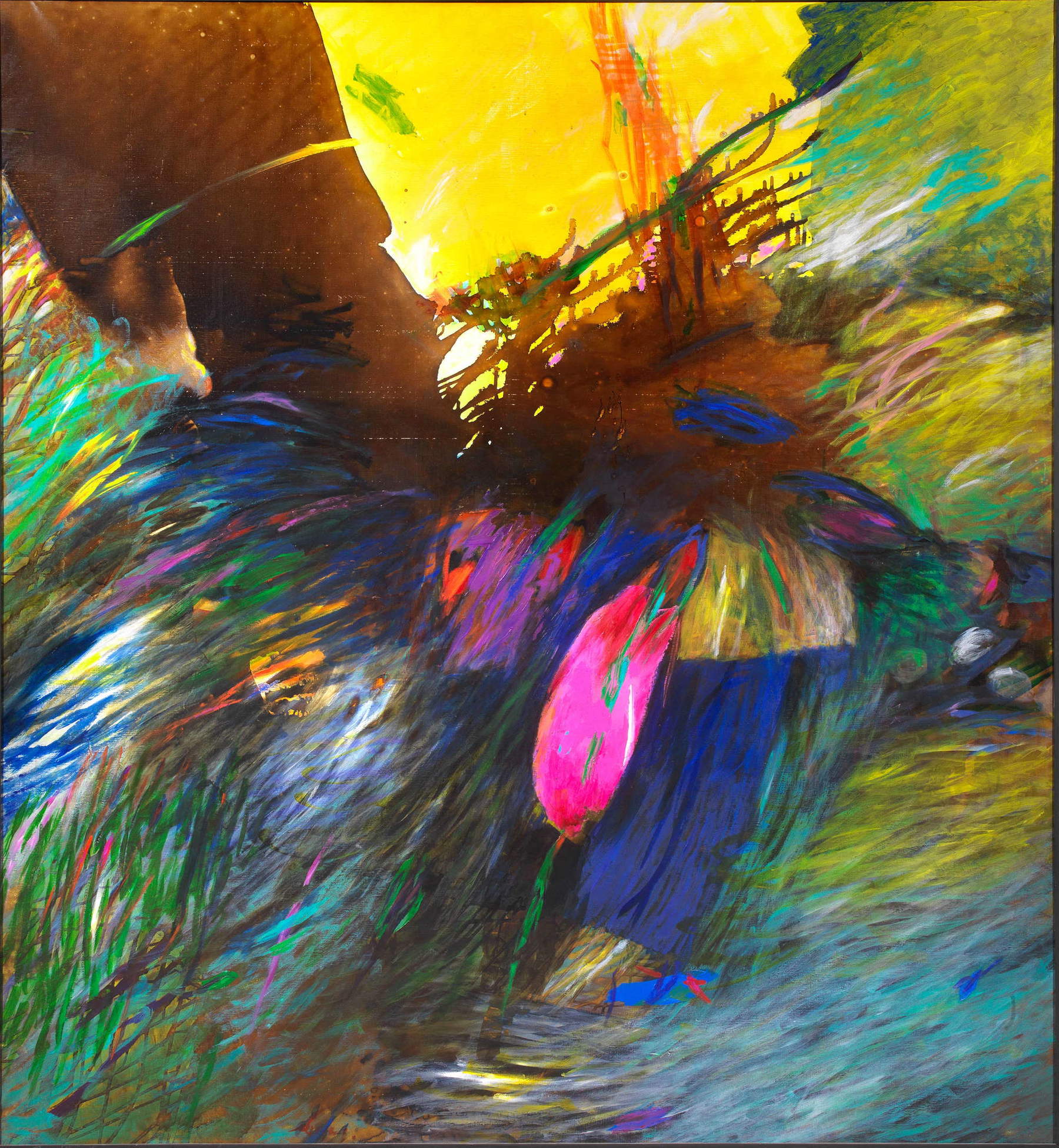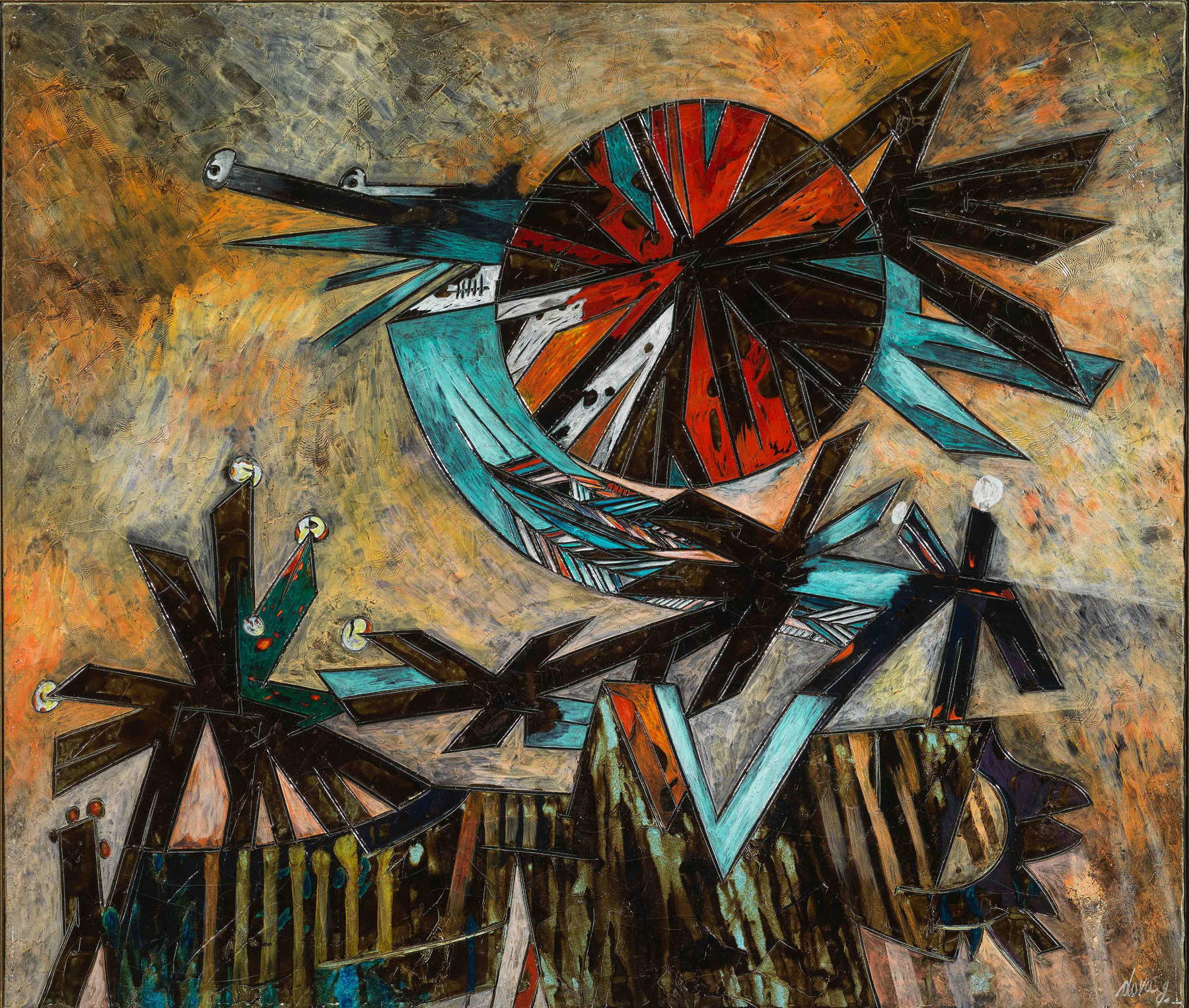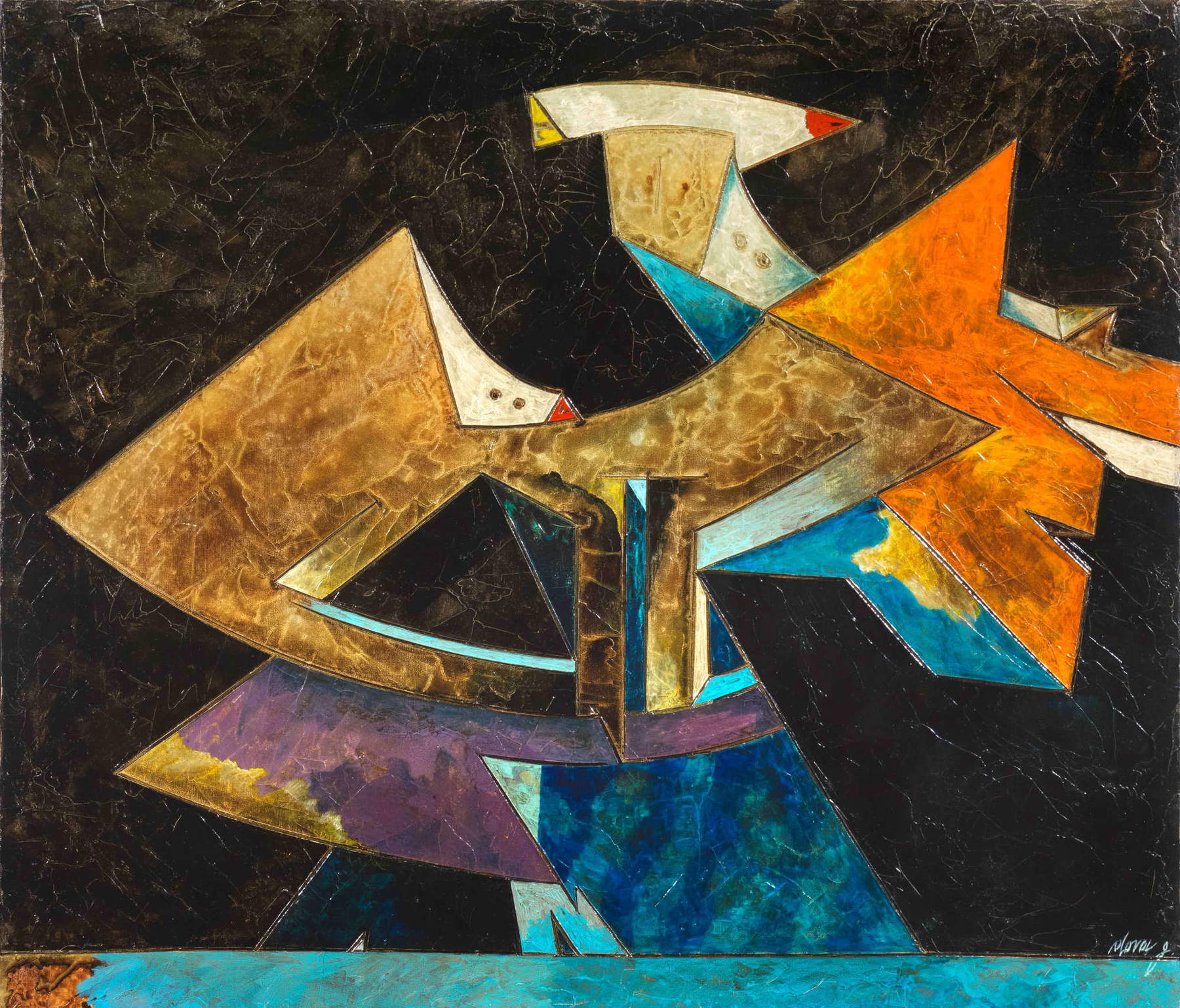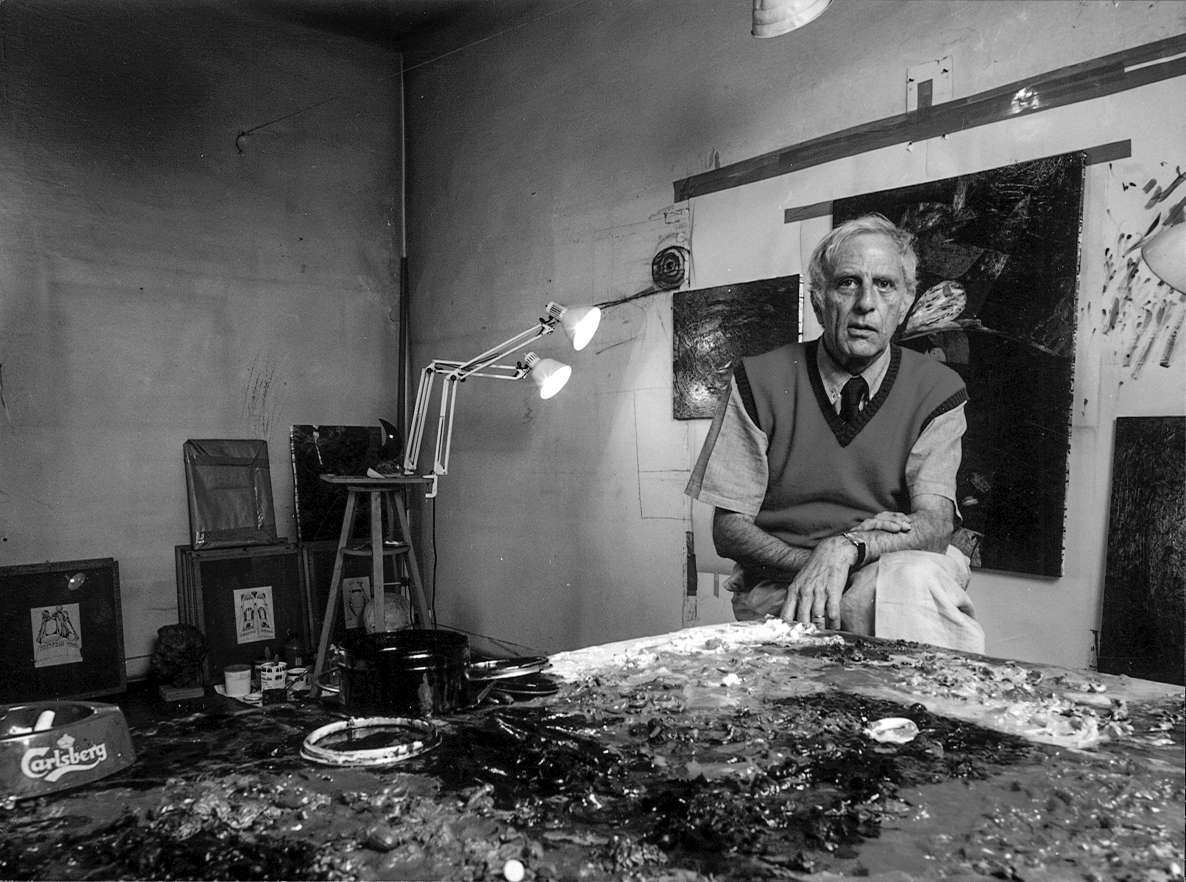Milan, from Tornabuoni Arte an exhibition on Gianni Dova and his contribution in postwar art
Tornabuoni Arte Gallery welcomes the anthological exhibition dedicated to Gianni Dova (Rome, 1925 - Pisa, 1991) entitled Gianni Dova. Real Life and Chromatic Magic, produced in collaboration with theDova Archive, which will be held at the Milan venue from October 3 to November 16, 2024. The exhibition traces the entire career of the artist, one of the protagonists of the Italian art scene of the second half of the 20th century, emphasizing Gianni Dova’s important contribution to the major art movements of the postwar period. As pointed out by art historian and art critic Enrico Crispolti when speaking on the figure of the artist, “Dova’s imaginative affair expresses on the whole, as a characteristic trait of his personality as a painter, a profound confidence in the suggestive possibilities of image construction, which always manages to propose itself endowed with a magical intensity.” He continues “...Dovian propositions seem to be most taken by a desire for fantastic translation, for the magical astonishment of the image, perhaps even finally by their substantial sunniness. And this is perhaps the most typical gift of his painting.”
Magical intensity, fantastic astonishment are some of the traits that emerge in the exhibition, which brings together more than twenty works, chosen from among the most significant ones, from between the 1950s-beginning with a work such as Anabasis 2, from 1954, linked to Nuclear Painting-and the 1980s, characterized by the current of Fantastic Naturalism. A focus is reserved for the paintings of the late 1950s and the 1960s and 1970s, more concerned with Metamorphic Neo-Surrealism. Some of them are recalled, such as Sculpture in the Open Air and In the Midst of a Branch, both from 1965, along with Resting on an Apple Branch, a little later, from 1973, and finally the canvas Fire of Autumn Stubble, from 1987. For the occasion, a catalog will be published with an unpublished text by art historian and critic, Luigi Cavadini, along with an essay by Enrico Crispolti, taken from the General Catalog of the artist, which he edited, and published in 2021 by Allemandi.




Notes on the artist
Gianni Dova born in Rome, moved to Milan with his family, where he attended the Brera Academy, a student of Carrà and Funi. With some of his classmates, particularly Roberto Crippa, he established a relationship of collaboration and deep friendship. He actively participated in the cultural debate of the early postwar years, signing in 1946, together with Crippa, Morlotti, Tassinari and Testori, the Manifesto of Realism (Beyond Guernica). Dova’s painting in this period was neo-Cubist, in line with the dominant trend among young artists recently out of the Academy who saw in Guernica ’s Picasso a model to follow. His research attracted the attention of collectors and gallery owners, so much so that he signed a contract with Antonio Boschi, an important patron of young Milanese artists, and with Carlo Cardazzo, the soul of the Gallerie del Naviglio in Milan and the Cavallino in Venice. In 1947, he founded, with Brindisi and Kodra, the Linea Group, which marked an initial break with neo-Cubism; fantastic animals began to appear in his paintings, influenced by a renewed Surrealist climate. Later, he approaches Lucio Fontana’s Space Movement and subscribes to the Second Space Manifesto. At the same time, he participates in the newly-born MAC Movimento Arte Concreta, of Dorfles and Ballocco: more markedly abstract-geometric works belong to this period, by virtue of which he is also invited to participate in the first Arte Astratta in Italia exhibition at the Galleria di Roma, organized on the initiative of Gruppo Forma. In 1951 he joined the Nuclear Painting Movement, which arose at a Milan exhibition by Baj and Dangelo, and signed its manifesto with Colombo, Del Pezzo and Crippa. Dova’s exhibition that same year at Galleria Il Milione is considered the first nuclear exhibition, where he experimented with glaze and water solutions to achieve icy, transparent surfaces. Later, with the addition of sand, he will achieve material effects close to Pollock’s dripping and Informal. He first participated in the Venice Biennale in 1952, and it was here that he met Michel Tapié.
At the end of 1953, he went through a period of crisis, from which he would emerge with a new pictorial phase. After a period in Paris, he moved to Antwerp in 1956, where he devoted himself to the study of early 15th-century artists, Bosch and the Flemish. Having exhausted his informal experience, he moved closer and closer to Surrealism, studying the automatic techniques of Ernst, the visionary figuration of Munch, Klee, Brauner and Delvaux, whom he got to see at the 1954 Venice Biennale. His works are populated with symbolic and metamorphic creatures, with refined Flemish coloring. Italian and international critics became increasingly interested in Dova, as evidenced by a major solo exhibition at the Palais des Beaux-Arts in Brussels. Returning to live in Milan, in 1959 he exhibited Difesa contrastata, a large fifteen-square-meter canvas, at the Quadriennale in Rome and participated for the first time in Documenta in Kassel. He was invited, in 1960, to the exhibition Possibilità di relazione, curated by Enrico Crispolti, Roberto Sanesi and Emilio Tadini at Galleria L’Attico in Rome. At the Venice Biennale, in 1962, he has his own room, and is presented in the catalog by Guido Ballo. In his pictorial production, space expands, the atmosphere becomes brighter and the characters become more welcoming and joyful, a symptom of a more harmonious relationship between man and the world. The 1967 trip to Brittany affected him profoundly, showing him a nature rich in symbolic ferment, stimuli that were reflected in his work where he deepened his reflection on the depths of the sea and made new, more figurative canvases of flights over water and gardens. The following year he bought a house in that region where he moved for long periods. Alongside painting, he began making tempera paintings on paper that would occupy him throughout the decade. Toward the end of the 1970s the landscape begins to take over: nature, told through the brilliance of color, is now the absolute protagonist, although always populated by creatures that “peep”, wink and look at us almost hiding. In 1991 a major anthological exhibition was organized in three venues, in Viareggio, Cesena and Mantua, curated by Claudio Spadoni.
 |
| Milan, from Tornabuoni Arte an exhibition on Gianni Dova and his contribution in postwar art |
Warning: the translation into English of the original Italian article was created using automatic tools. We undertake to review all articles, but we do not guarantee the total absence of inaccuracies in the translation due to the program. You can find the original by clicking on the ITA button. If you find any mistake,please contact us.



























